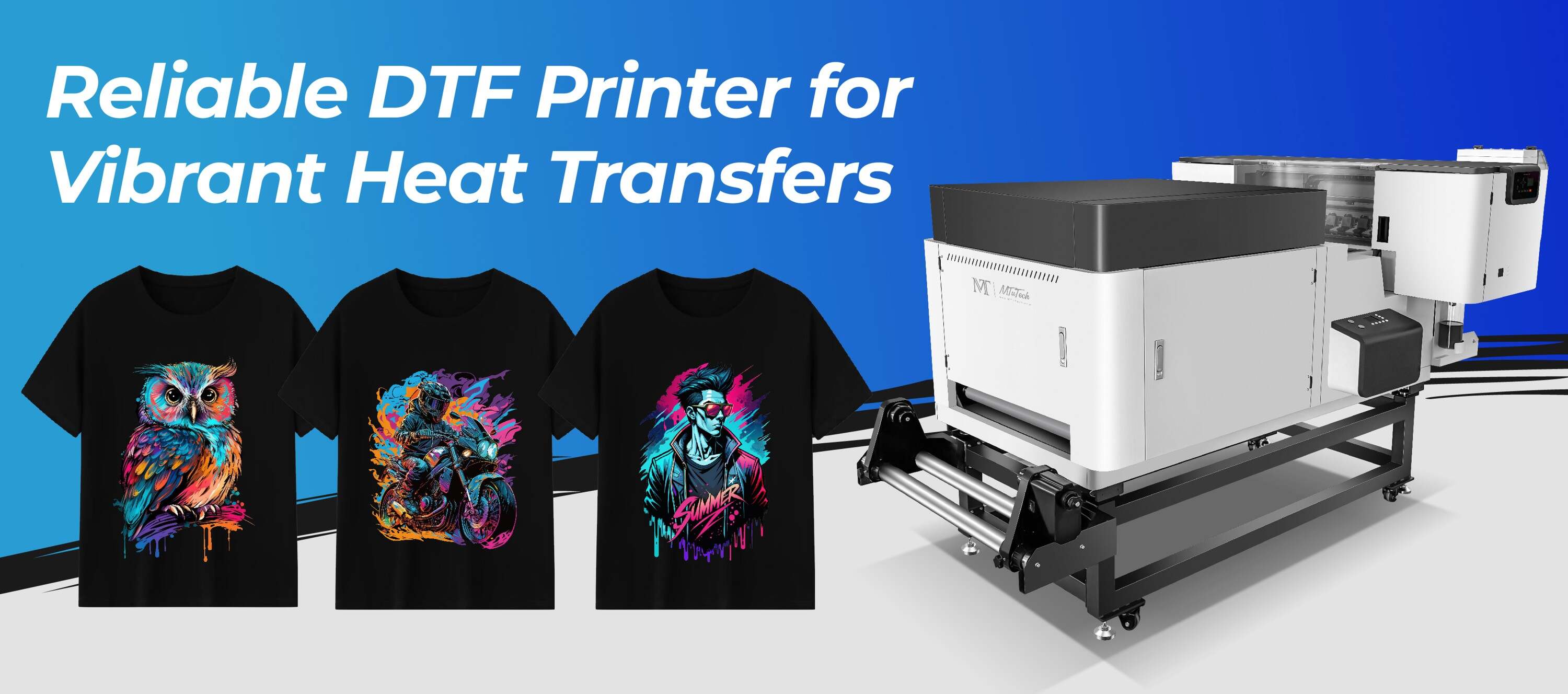Introduction
Direct-to-Film (DTF) printing is revolutionizing the way we approach custom apparel and design projects. With DTF printers, you can transfer high-quality graphics onto a wide range of fabrics, making it an ideal choice for entrepreneurs and hobbyists alike. If you’re considering diving into this innovative printing method, this step-by-step guide will walk you through the process of setting up your first DTF printer.
Understanding DTF Printing
Before we jump into the setup process, let’s take a moment to understand what DTF printing entails. Unlike traditional methods such as screen printing or DTG (Direct-to-Garment) printing, DTF printing utilizes special inks that are printed onto a film, which is then transferred to the garment using heat and pressure. This technique provides vibrancy, durability, and versatility.
What You'll Need
Setting up your DTF printer requires some essential equipment and supplies. Here’s a list of what you’ll need:
DTF Printer
Heat Press Machine
DTF Transfer Film
DTF Inks (typically pigment-based)
Adhesive powder
Computer with design software
Blank garments or fabrics for testing
Step 1: Gather Your Supplies
Start by collecting all the necessary equipment mentioned above. Most importantly, ensure that your DTF printer operates optimally with the right inks and film. For high-quality options, you can explore our high-quality DTF printers here.
Step 2: Set Up Your DTF Printer
Choose the Right Location
Your printer should be placed in a clean, dry area with adequate space for airflow. Avoid direct sunlight and keep the printer away from excessive moisture.
Unboxing and Initial Setup
Carefully unbox your printer, ensuring you keep all components intact. Follow these initial setup steps:
Remove any protective coverings and packing materials.
Install the ink cartridges according to the manufacturer’s instructions.
Connect the power cord and turn on the printer.
Connect to Your Computer
Using the provided USB cable, connect your DTF printer to your computer. Install any necessary drivers or software that came with the printer to ensure smooth operation. This software typically allows you to manage print settings, such as ink usage and print quality.
Step 3: Prepare Your Artwork
Design Your Graphics
Using design software such as Adobe Illustrator, CorelDRAW, or any other raster graphic editor, create your designs for printing. Make sure to use vibrant colors and high-resolution images to get the best results on your final product.
Format Your Artwork for DTF Printing
When preparing your artwork, you’ll need to save it in a compatible format (usually PNG or JPEG) with a transparent background. Check that the resolution is set to at least 300 DPI for crisp prints.
Step 4: Print the Design
Load Your DTF Transfer Film
Take your DTF transfer film and load it into the printer. Ensure that the printable side is facing the correct direction, as indicated by the printer's manual.
Adjust Print Settings
Access the printer settings through the user interface. Adjust the following parameters:
Choose the correct media type (usually film).
Set print quality to high.
Adjust the color settings if needed.
Perform a Test Print
Before running a large batch, always do a test print on a small sample of film. This will help you fine-tune your settings and perfect your design before printing onto garments.
Step 5: Apply Adhesive Powder
Once you've printed your design, it’s time to apply the adhesive powder:
Sprinkle the adhesive powder evenly over the printed design.
Ensure all areas of the print are covered.
Shake off any excess powder to prevent clumping.
Step 6: Cure the Print
To properly set the adhesive, you'll need to cure the print:
Place the printed film onto a heat-resistant surface.
Use a heat gun to gently apply heat until the adhesive is melted and smoothly adhered to the print.
Let the print cool before handling it.
Step 7: Transfer to Garment
Prepare the Heat Press
Set your heat press to the recommended temperature and pressure settings for the type of garment you are using. Typically, temperatures will range from 320°F to 385°F (160°C to 196°C).
Transfer the Print
Align your film on the garment and cover with a Teflon sheet or parchment paper. Close the heat press and apply both heat and pressure according to the manufacturer's guidelines.
Peel Off the Film
Allow the print to cool for a moment, then carefully peel off the transfer film. If done correctly, your design should now be transferred beautifully onto the fabric.
Step 8: Post-Processing
After transferring your design, it’s essential to process the garment appropriately:
Perform a second heat press for a few seconds to ensure proper bonding.
Wait at least 24 hours before washing or exposing it to heavy moisture.
Advise customers (if applicable) to wash inside out and tumble dry low to preserve the design.
Conclusion
Setting up your first DTF printer may seem complicated, but by following this step-by-step guide, you'll be on your way to producing vibrant, high-quality prints in no time. DTF printing opens up exciting possibilities for custom designs and apparel creation, allowing you to unleash your creativity. Happy printing!
FAQ
What is the main difference between DTF and DTG printing?
DTF printing involves printing designs onto a film that is then transferred to fabric using heat, while DTG printing prints designs directly onto the garment. DTF can be used on various surfaces, while DTG is primarily for direct fabric prints.
Can I use any type of fabric for DTF printing?
DTF printing is versatile and works on a wide range of fabrics, including cotton, polyester, blends, and more. However, it is always best to test your specific fabric type for optimal results.
How long do DTF prints last?
When properly applied and cared for, DTF prints can last a significant amount of time, often comparable to screen prints. It’s crucial to follow washing instructions to ensure longevity.
Is it necessary to use a heat press for DTF printing?
Yes, a heat press is essential for DTF printing as it enables the transfer of the design from the film to the garment, ensuring proper bonding and durability.

